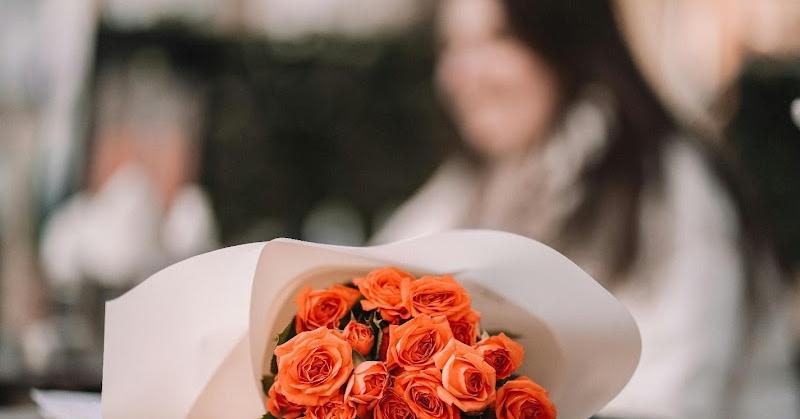In the ever-evolving tapestry of fashion, the enchantment of flowers remains a constant muse, weaving its way through the threads of clothing and accessories. This article delves into the captivating world of floral fashion, exploring how blossoms have perennially inspired designers and adorned our wardrobes, transcending mere trends to become timeless symbols of beauty and elegance. Amidst this exploration of floral motifs, there emerges a simple yet powerful notion: buy big bouquets of flowers. These grand gestures not only enhance aesthetic appeal but also bring a touch of nature’s beauty into our lives, fostering joy and appreciation.
Introduction: Blooming Brilliance in Design
From the courts of Renaissance Europe to the catwalks of modern Paris, flowers have been a recurring motif in fashion. Their natural elegance and diverse beauty make them an unending source of inspiration. In this exploration, we will unravel how fashion designers, across eras, have drawn from this natural wonder, creating floral-patterned fabrics and flower-shaped accessories that capture the imagination and bring the splendor of the garden into our daily lives.
Floral Prints Through the Ages
The story of floral prints in fashion is as diverse as the flowers themselves. In the Renaissance, floral designs were intricate and delicate, reflecting the period’s fascination with detailed art and nature. Fast forward to the Victorian era, and we see a more subdued use of florals, mirroring the social mores of modesty and restraint. However, it was the 20th century that truly saw the explosion of floral prints, each decade presenting its unique interpretation.
The roaring twenties brought forth flapper dresses adorned with soft, pastel florals, while the post-war 1950s saw a return to femininity with large, bold flower prints. The 1960s and 70s took a dramatic turn, with psychedelic and vibrant floral patterns reflecting the counterculture movements. Today, floral prints continue to evolve, yet they retain their timeless appeal, adorning everything from haute couture to everyday wear.
In the 1980s and 90s, floral patterns intertwined with the eras’ distinctive styles – power suits of the 80s were softened by subtle floral motifs, while the grunge movement of the 90s saw a rebellious twist with darker, moody florals. The dawn of the 21st century ushered in a digital revolution in textile design, allowing for more intricate and realistic floral prints, further expanding the realm of possibilities.
Designers began blending traditional floral patterns with modern aesthetics, creating a fusion that resonated with a new generation of fashion enthusiasts. In recent years, sustainability movements have influenced floral fashion, with eco-conscious designers opting for organic and recycled fabrics featuring nature-inspired prints. This evolution illustrates not just a change in aesthetic preferences, but also a growing awareness of fashion’s impact on the environment, making floral prints a symbol of both beauty and responsibility.
Accessories and Floral Adornments
Flowers in fashion are not limited to fabrics alone; they bloom equally in the realm of accessories. Floral crowns, a symbol of celebration and love, have been a part of human adornment for centuries, from ancient Greek ceremonies to the modern-day music festival scene. In the form of brooches, flowers have added a touch of sophistication to attire, often serving as symbols of remembrance or allegiance.
Handbags, too, have not escaped the floral touch, with designers often using flower motifs to add a burst of color and texture. Whether it’s a subtle daisy chain bracelet or a bold rose-patterned clutch, floral accessories offer a way to infuse style, elegance, and a touch of whimsy into our outfits.
This floral fascination extends to footwear as well, where designers have embraced flower patterns and embellishments, transforming ordinary shoes into extraordinary fashion statements. In jewelry, floral motifs are a perennial favorite, with necklaces, earrings, and rings blooming with petals and leaves in precious metals and gemstones.
Even eyewear has not been immune to this trend, as sunglasses and prescription frames feature floral designs, adding a playful yet chic edge to functional accessories. In the realm of men’s fashion, floral ties, pocket squares, and lapel pins have emerged as a stylish nod to this trend, breaking the monotony of traditional menswear. The versatility of floral accessories means they can adapt to any style, from the height of luxury fashion to the simplicity of everyday wear, proving that flowers in fashion are as adaptable as they are beautiful.
Conclusion: The Eternal Spring of Floral Fashion
Flowers in fashion, much like in nature, continue to flourish. They remind us of the beauty of the natural world and our enduring desire to capture and wear this beauty. In a world where fashion trends come and go with the changing seasons, the floral motif remains timeless, bridging past and present, tradition and innovation. It’s a testament to the enduring allure of nature’s artistry, continually inspiring designers to bring a touch of the garden’s magic into our everyday lives. As we move forward, the fusion of nature and fashion promises to keep blooming, ensuring that our wardrobes will always have a place for the elegance and charm of floral fashion.
